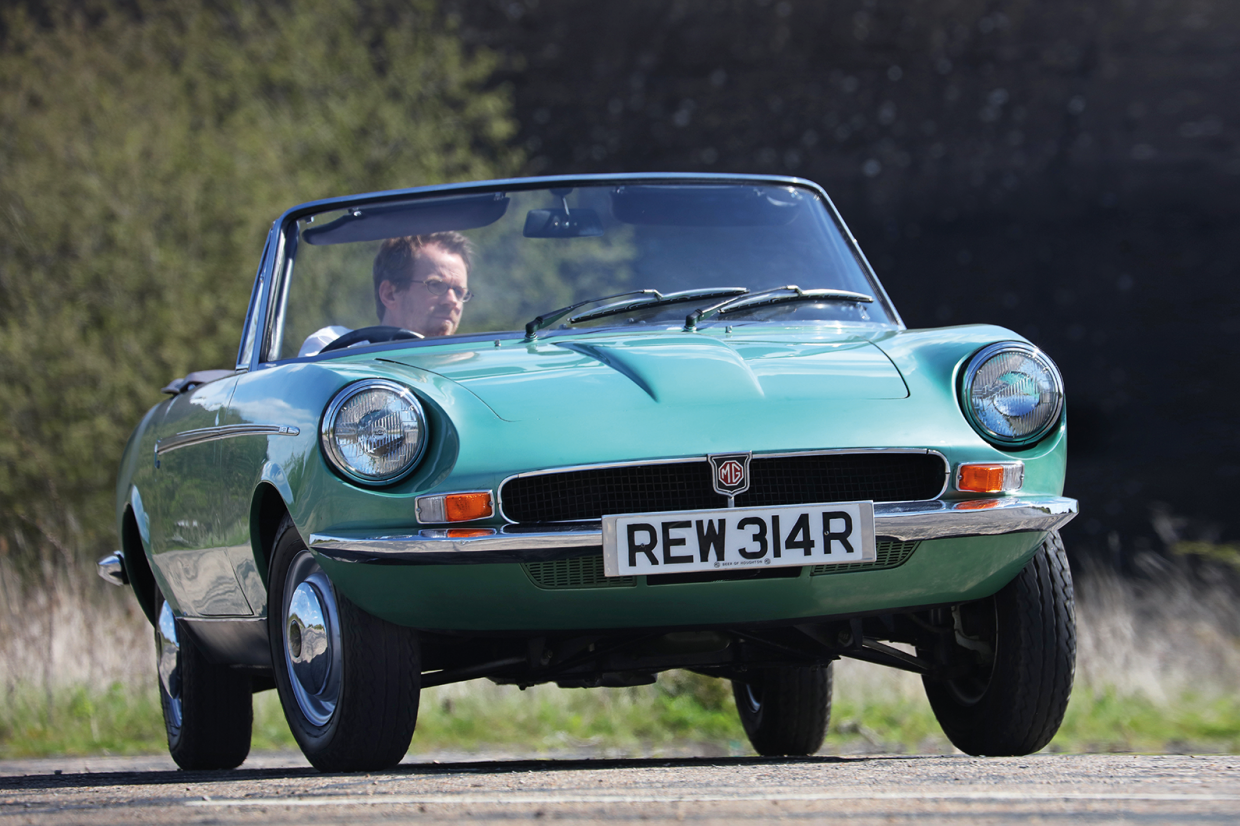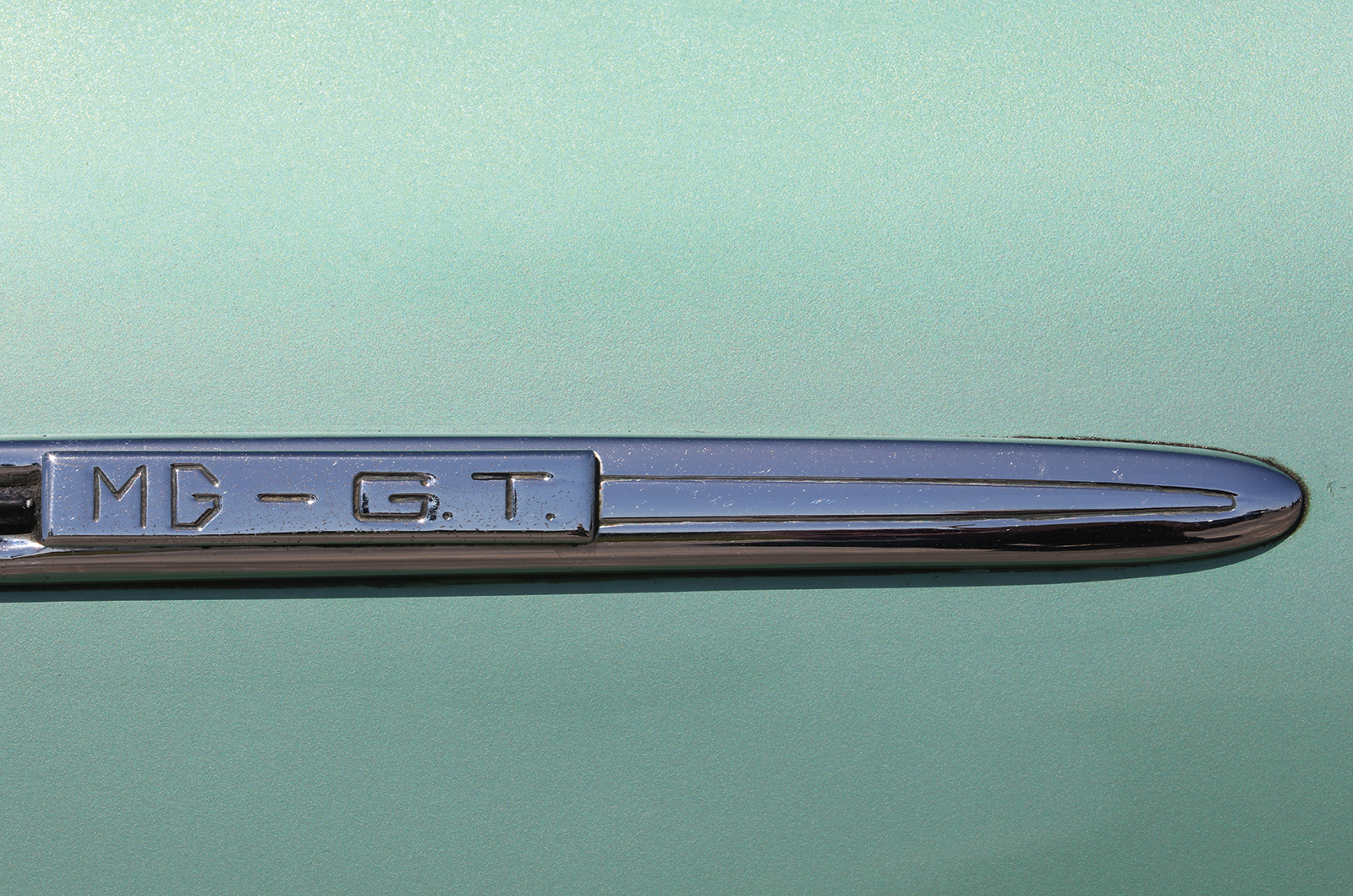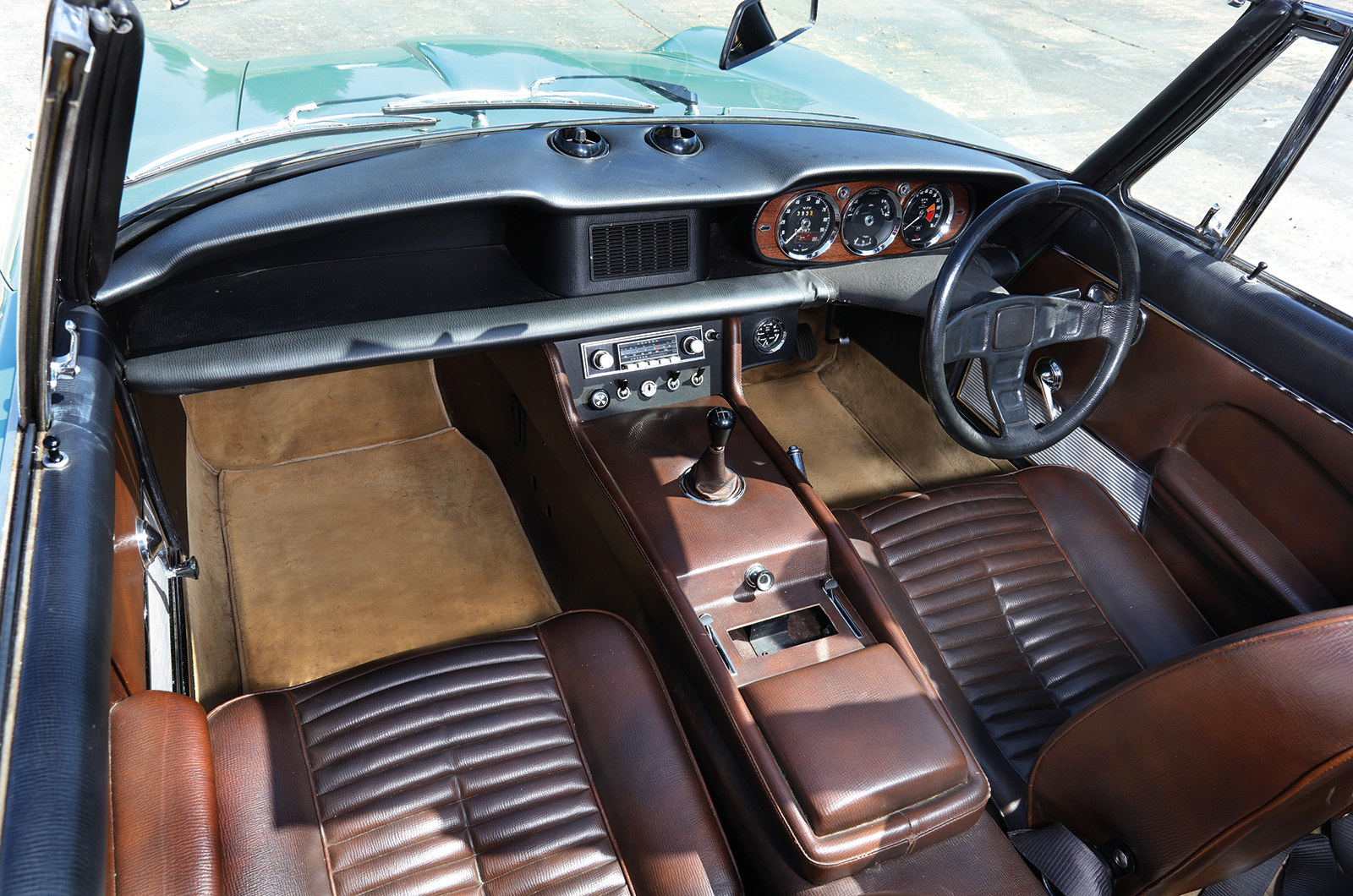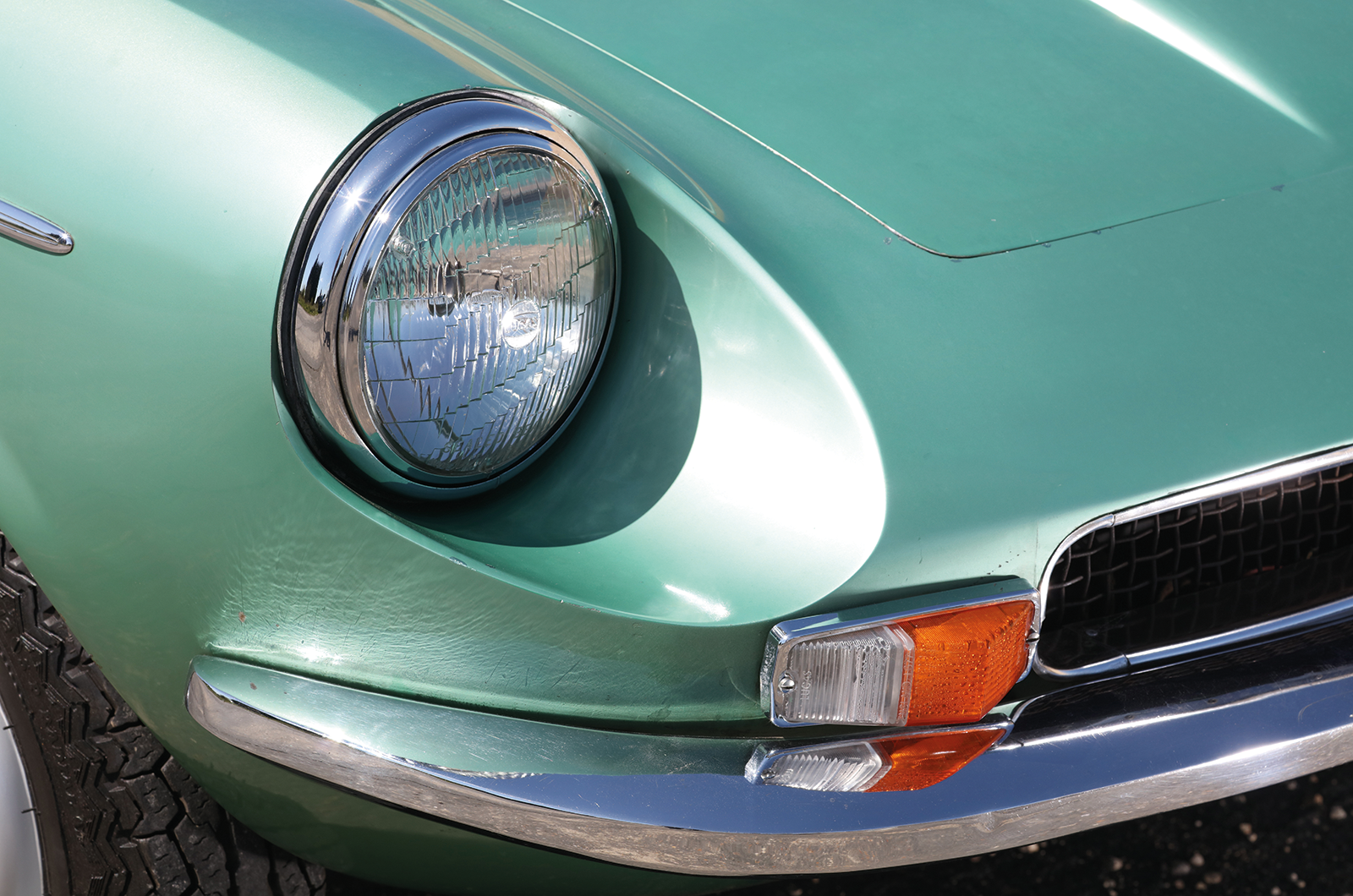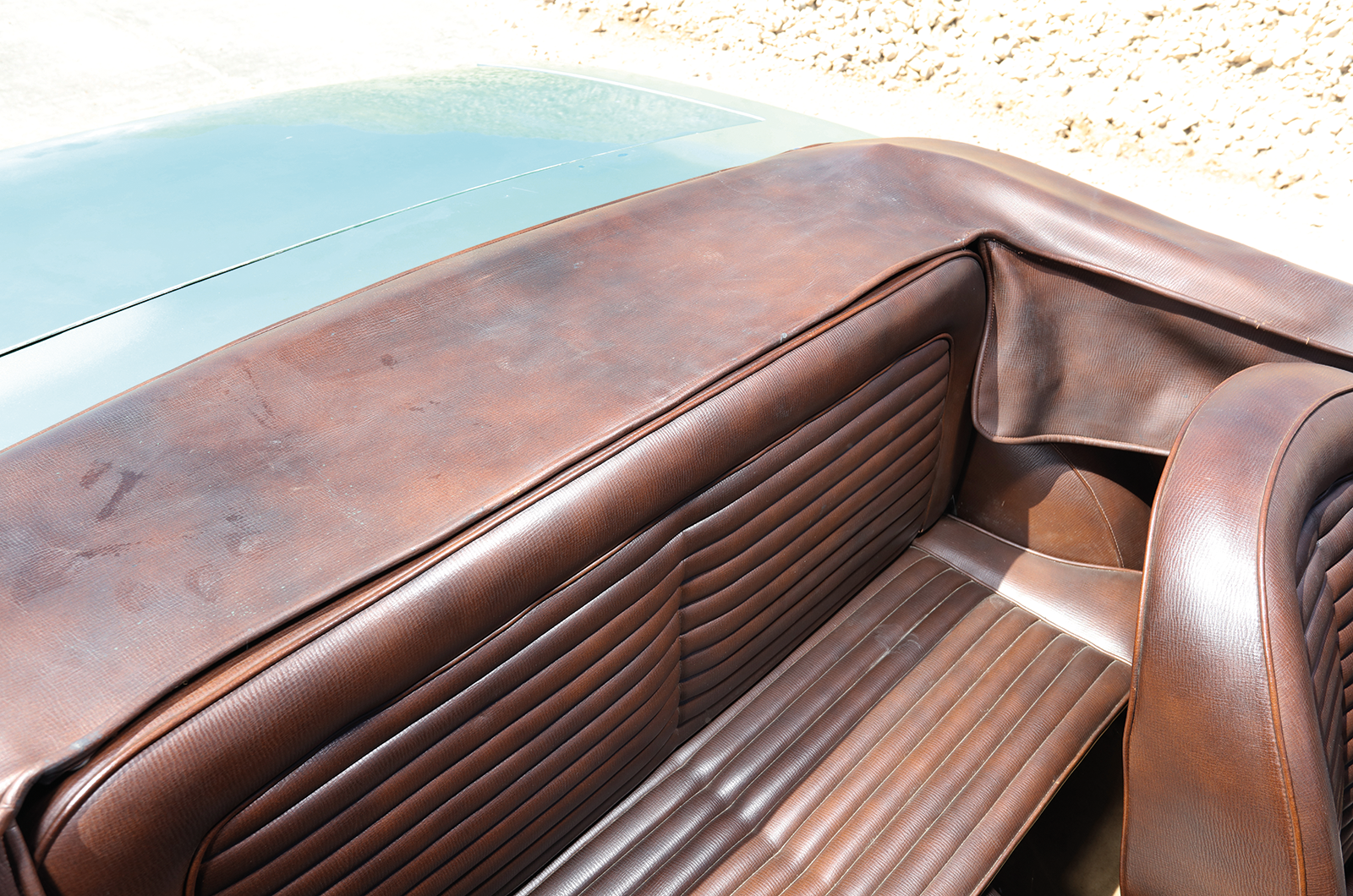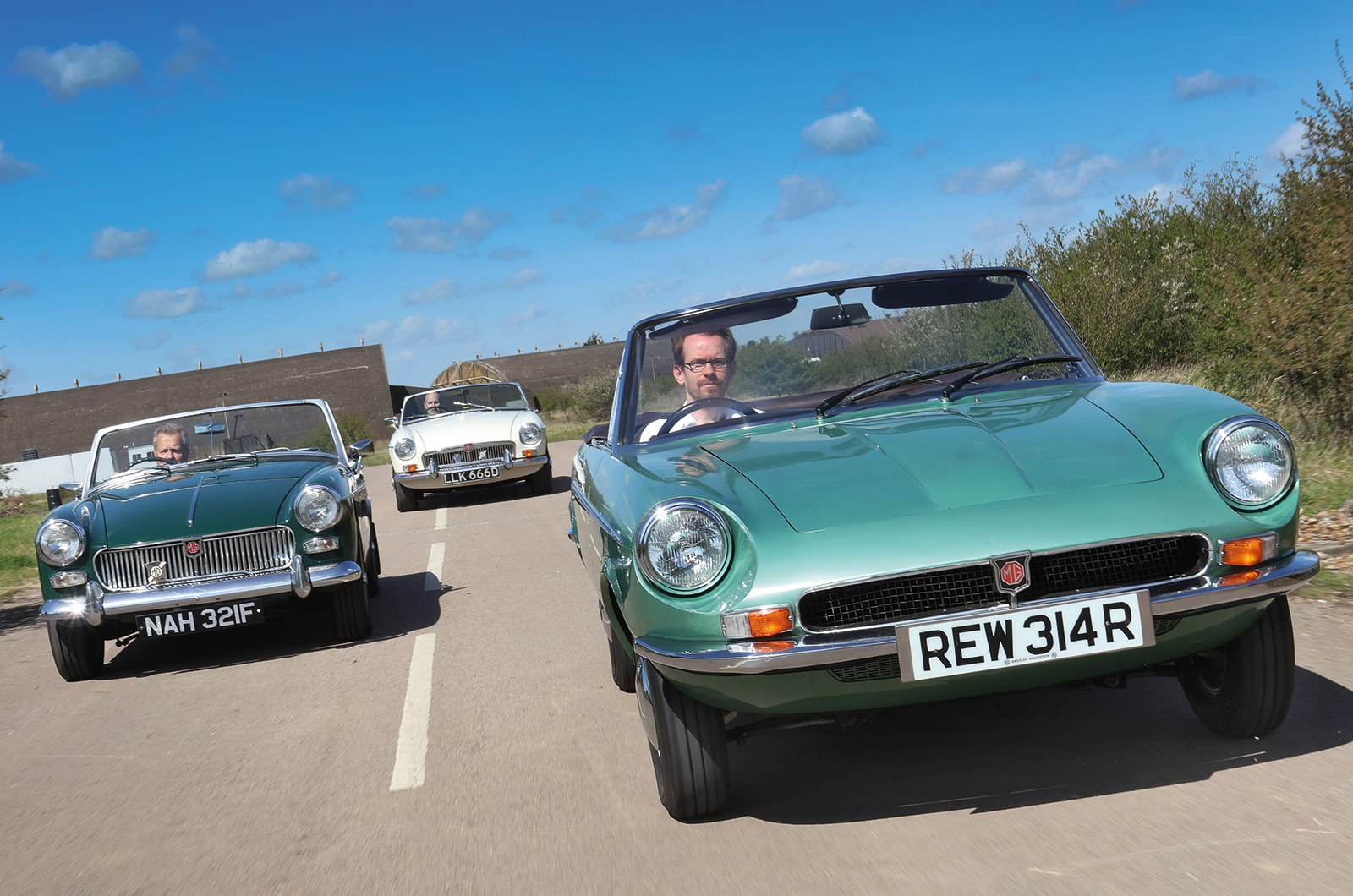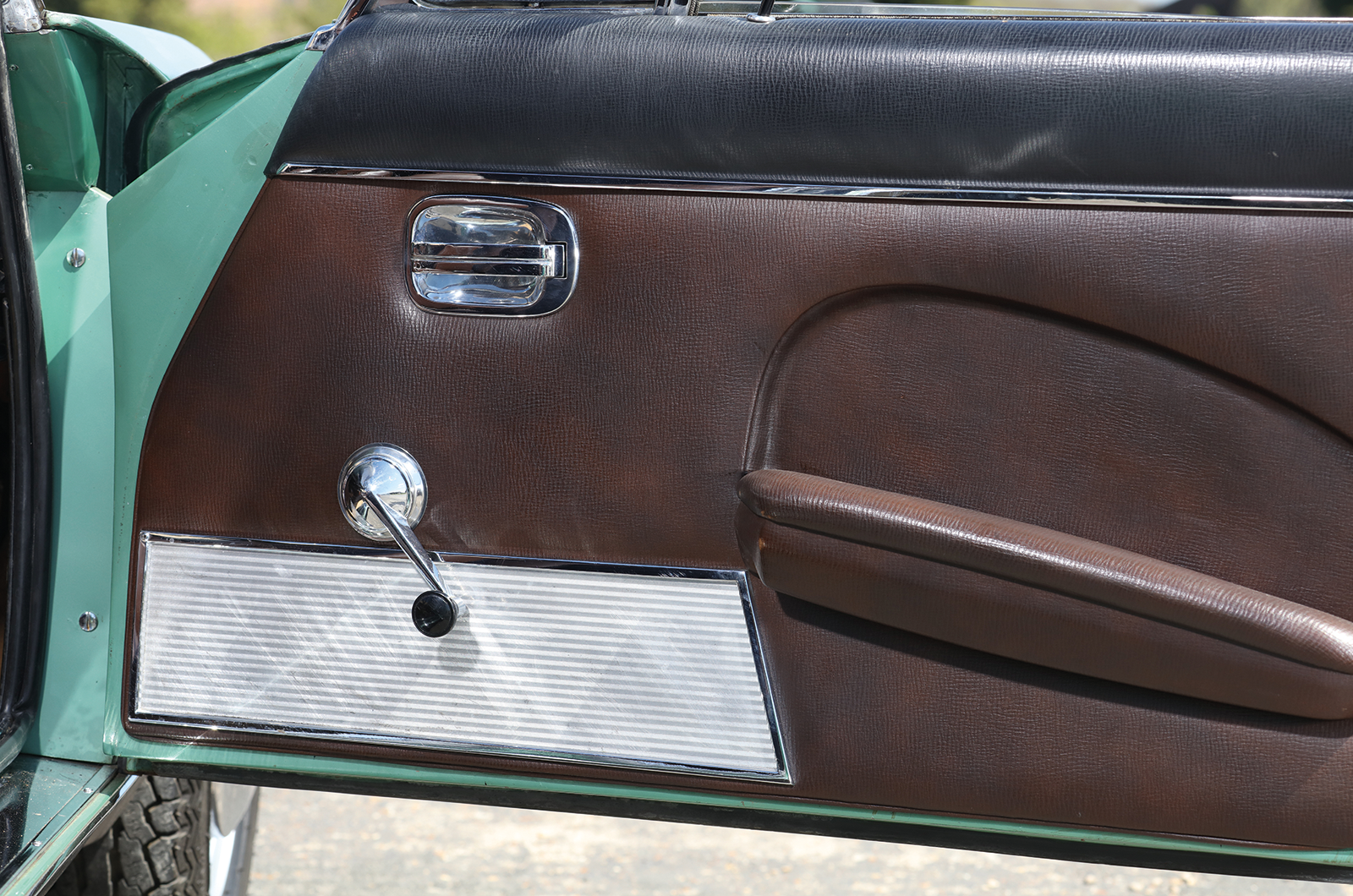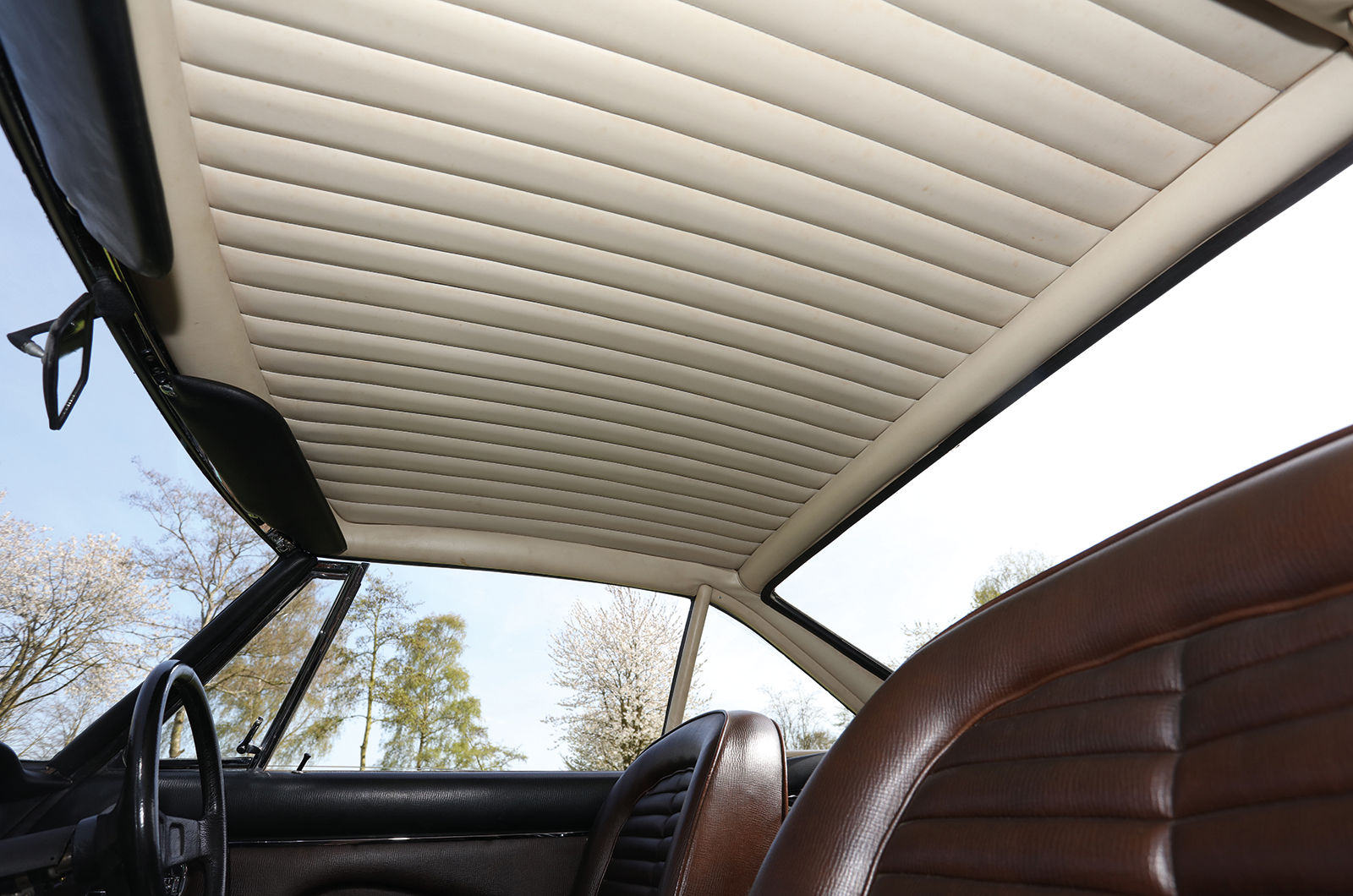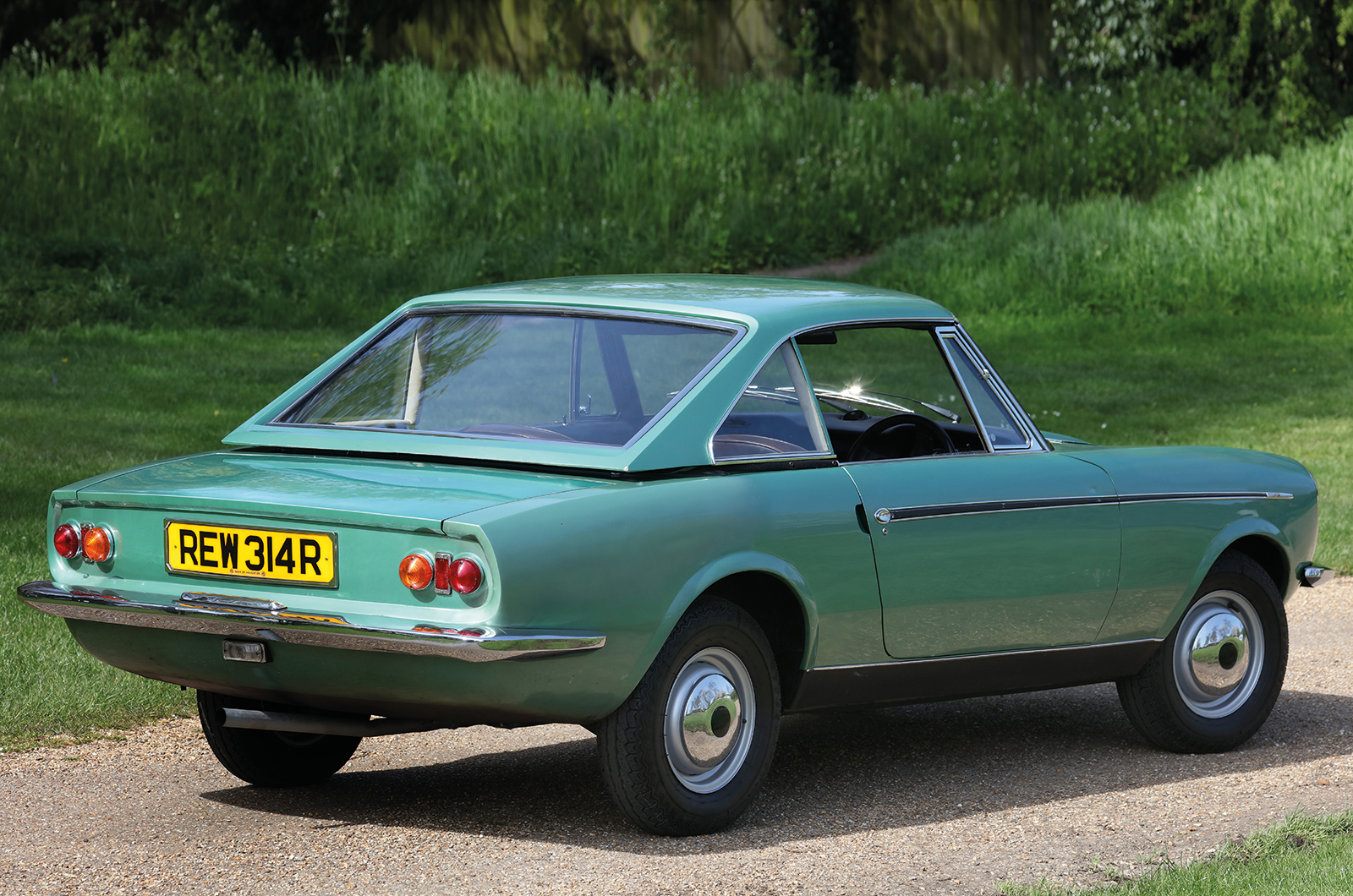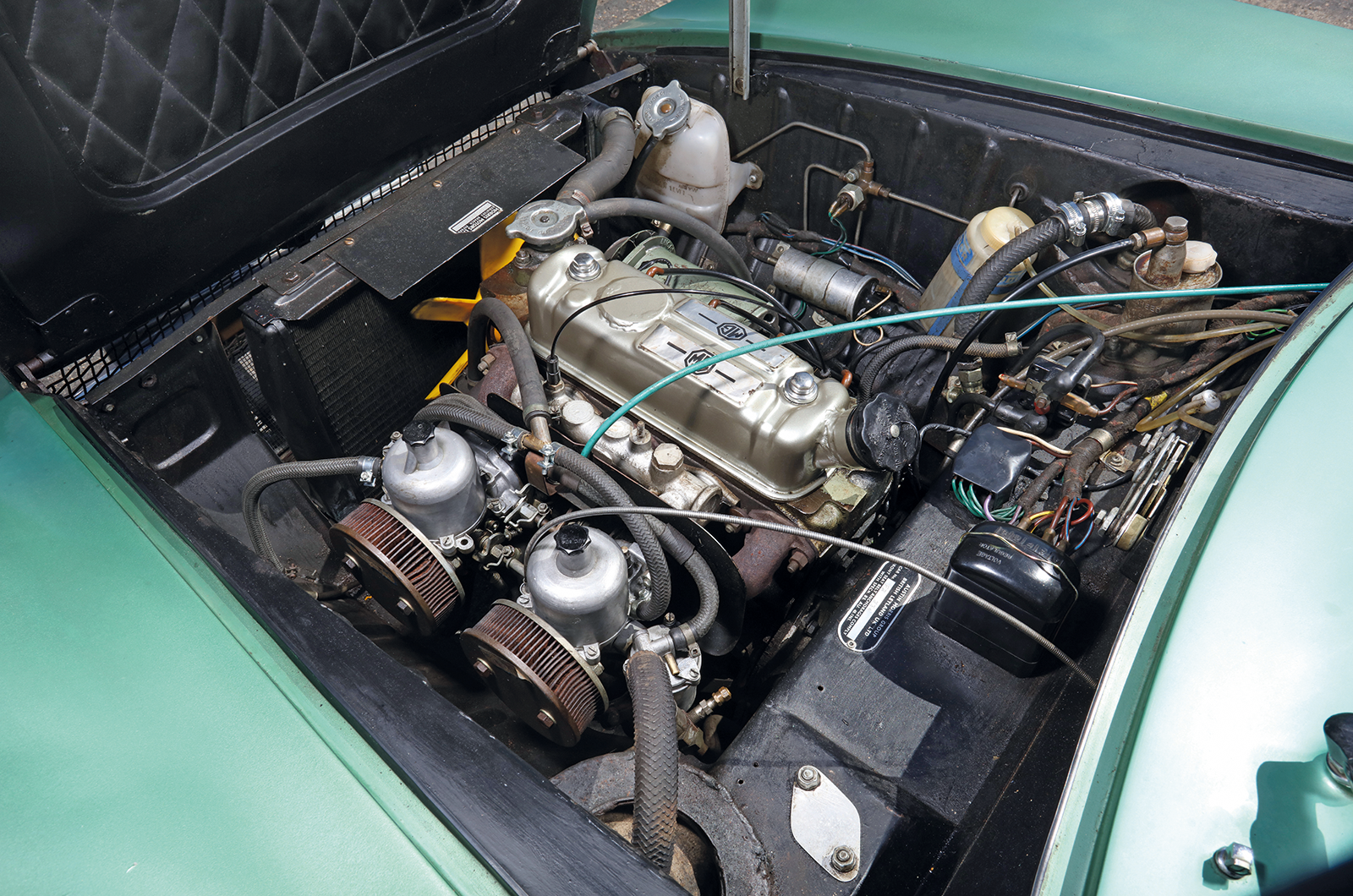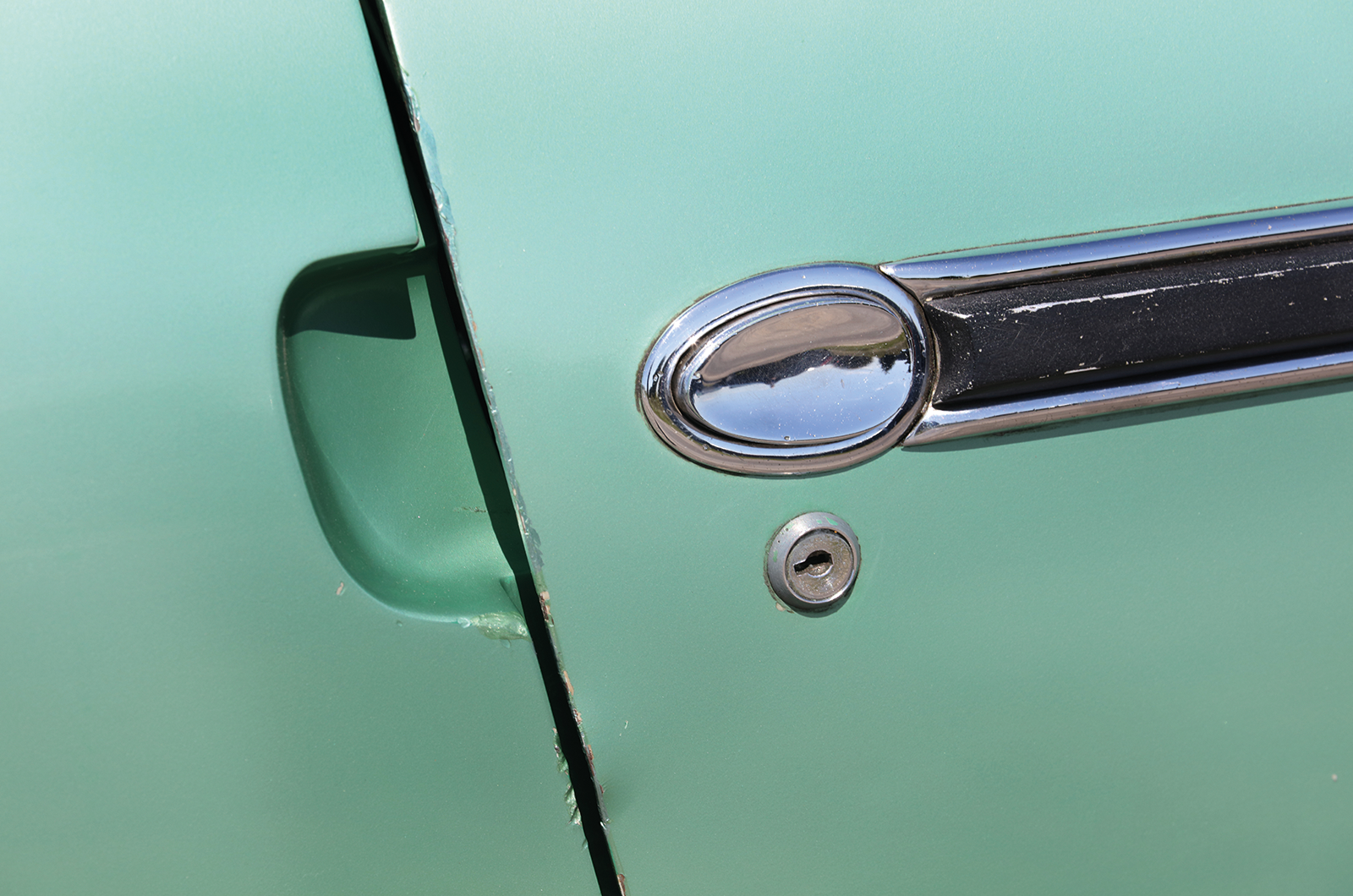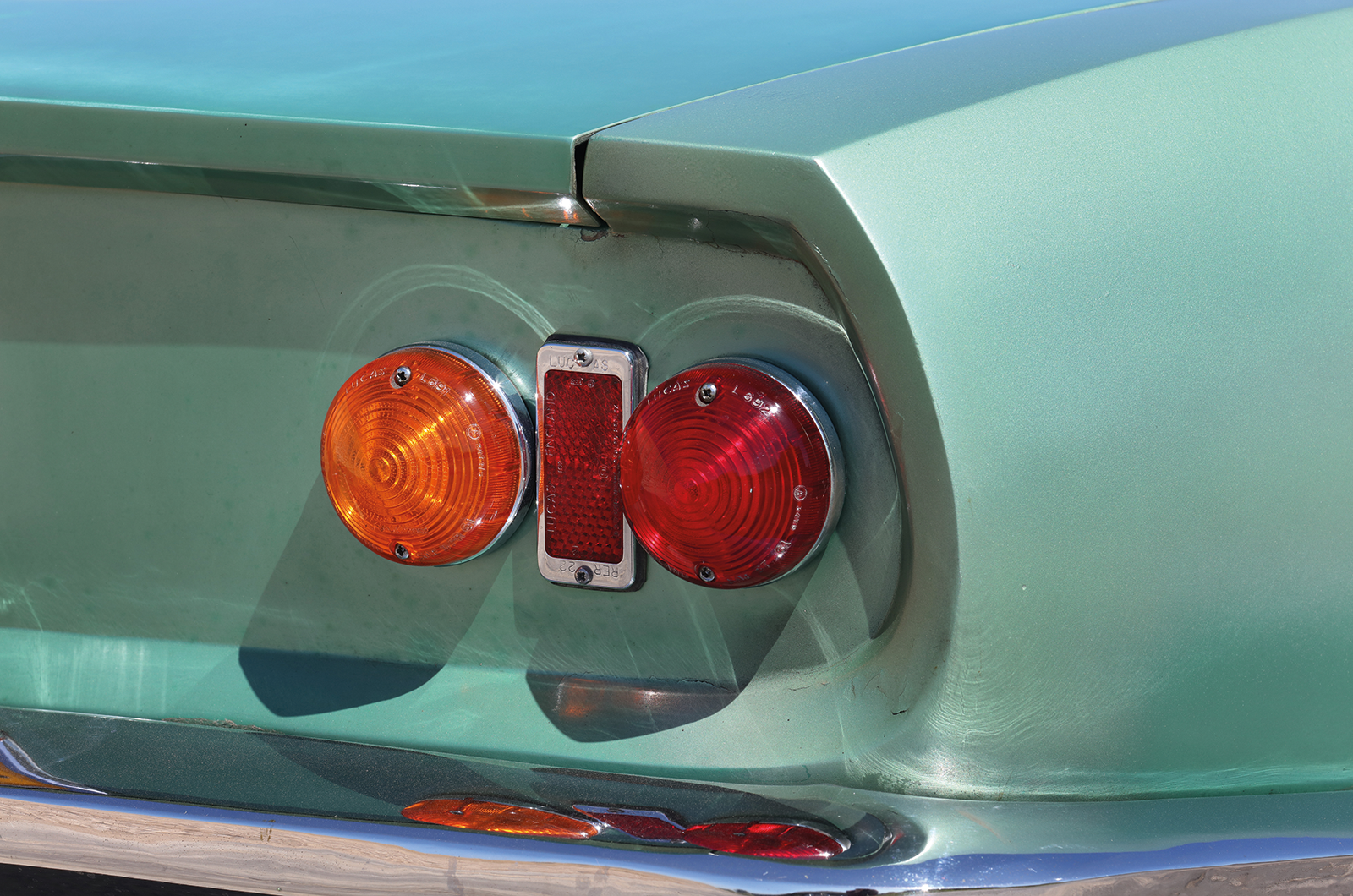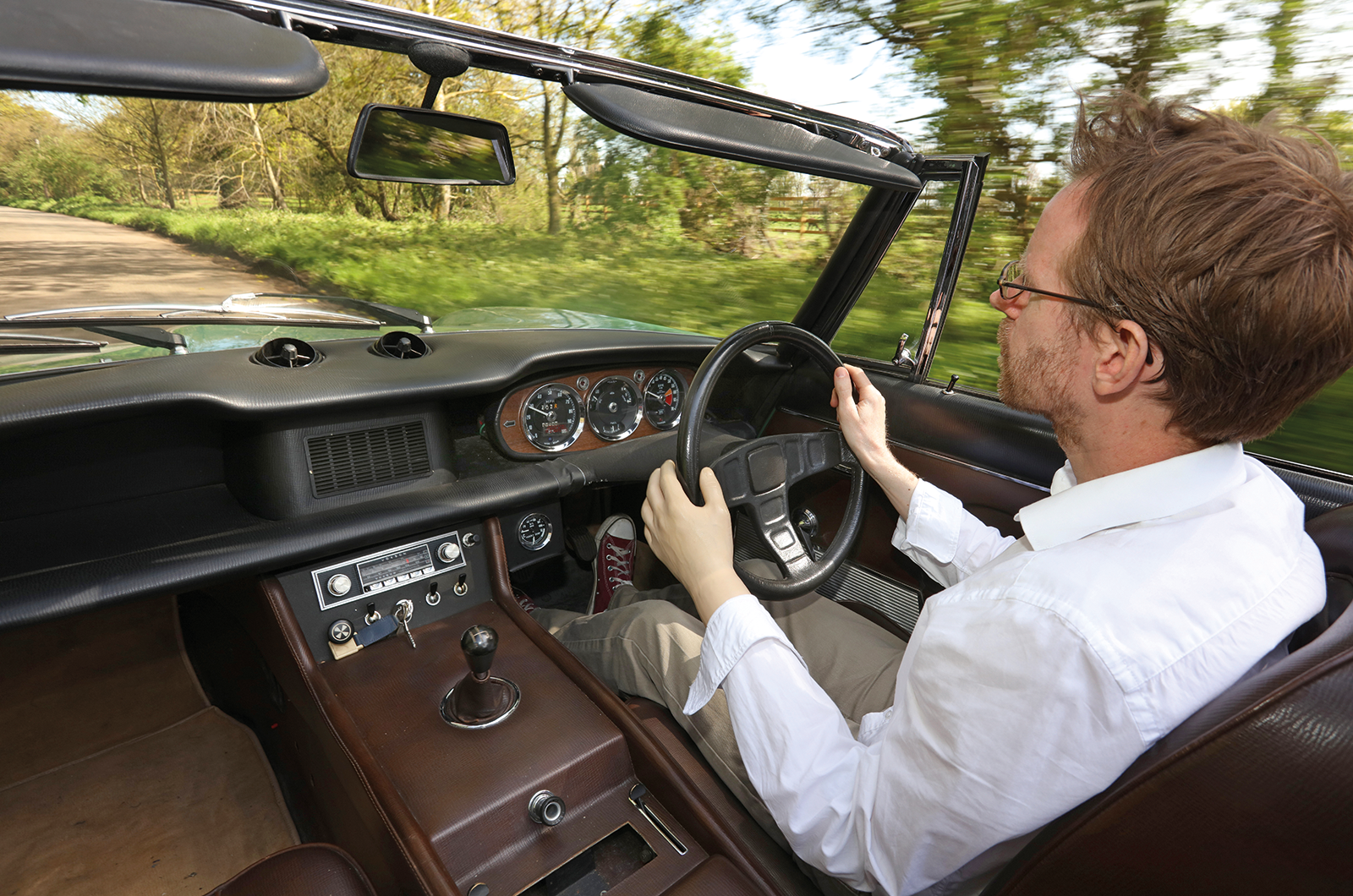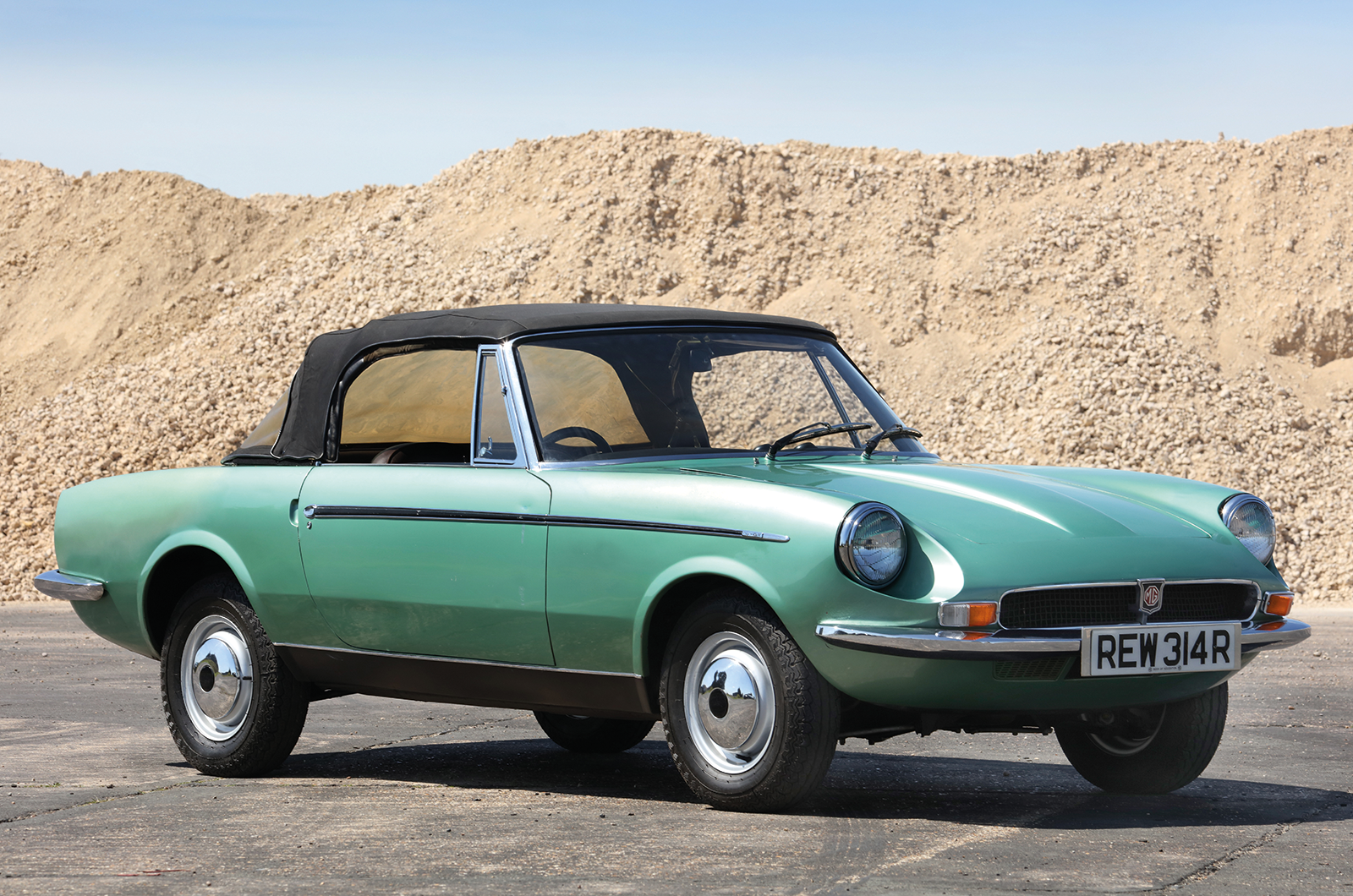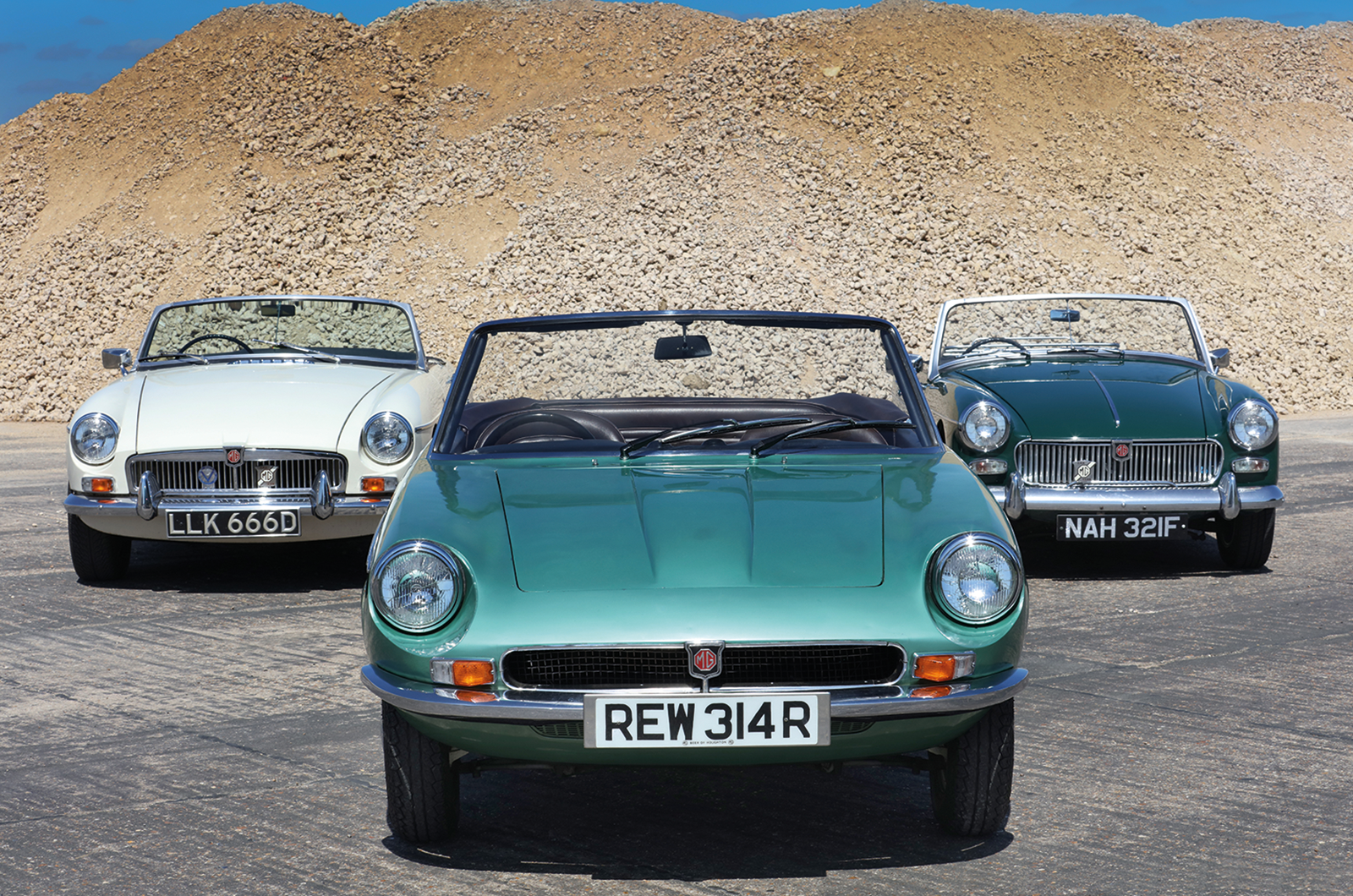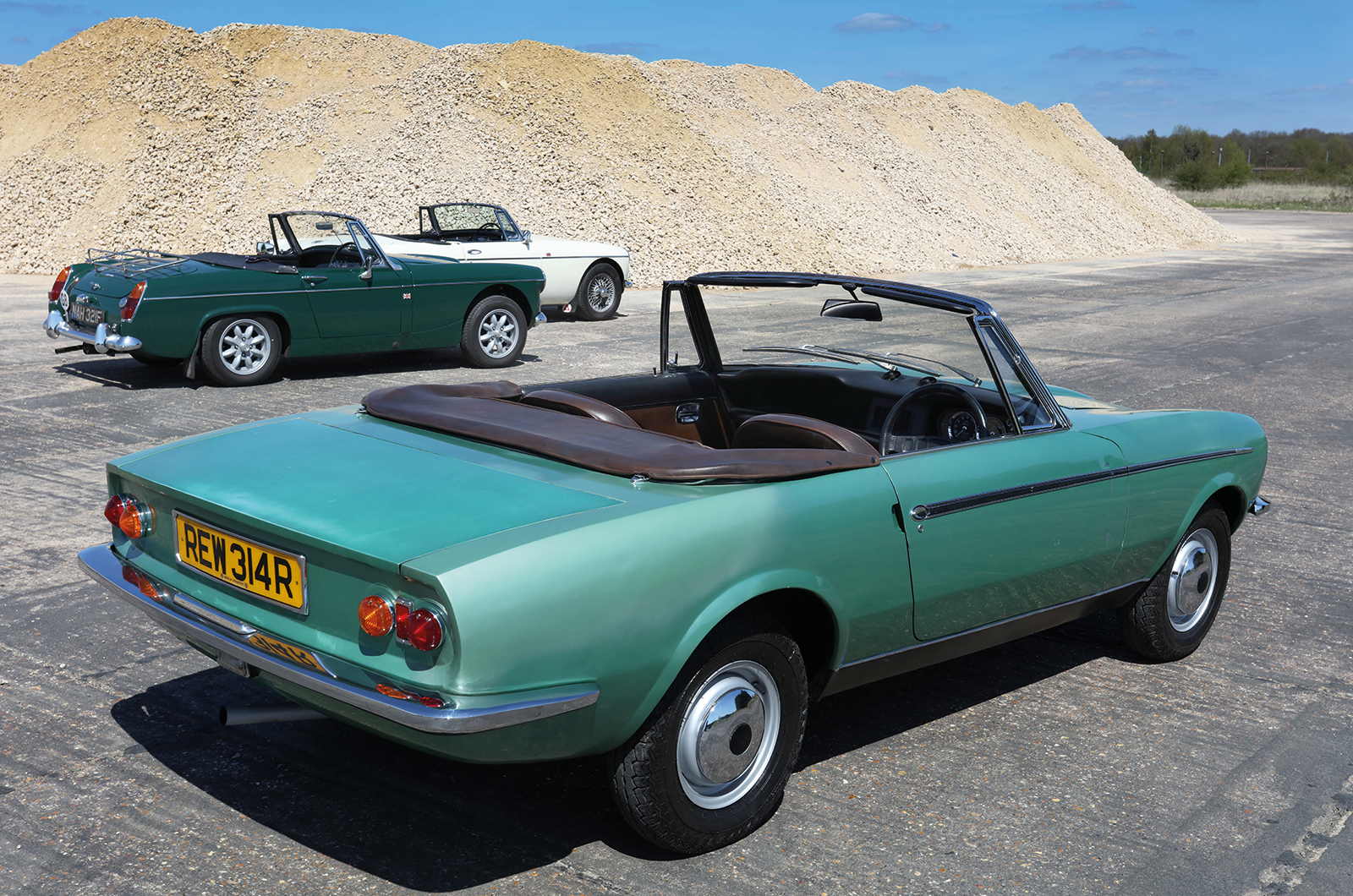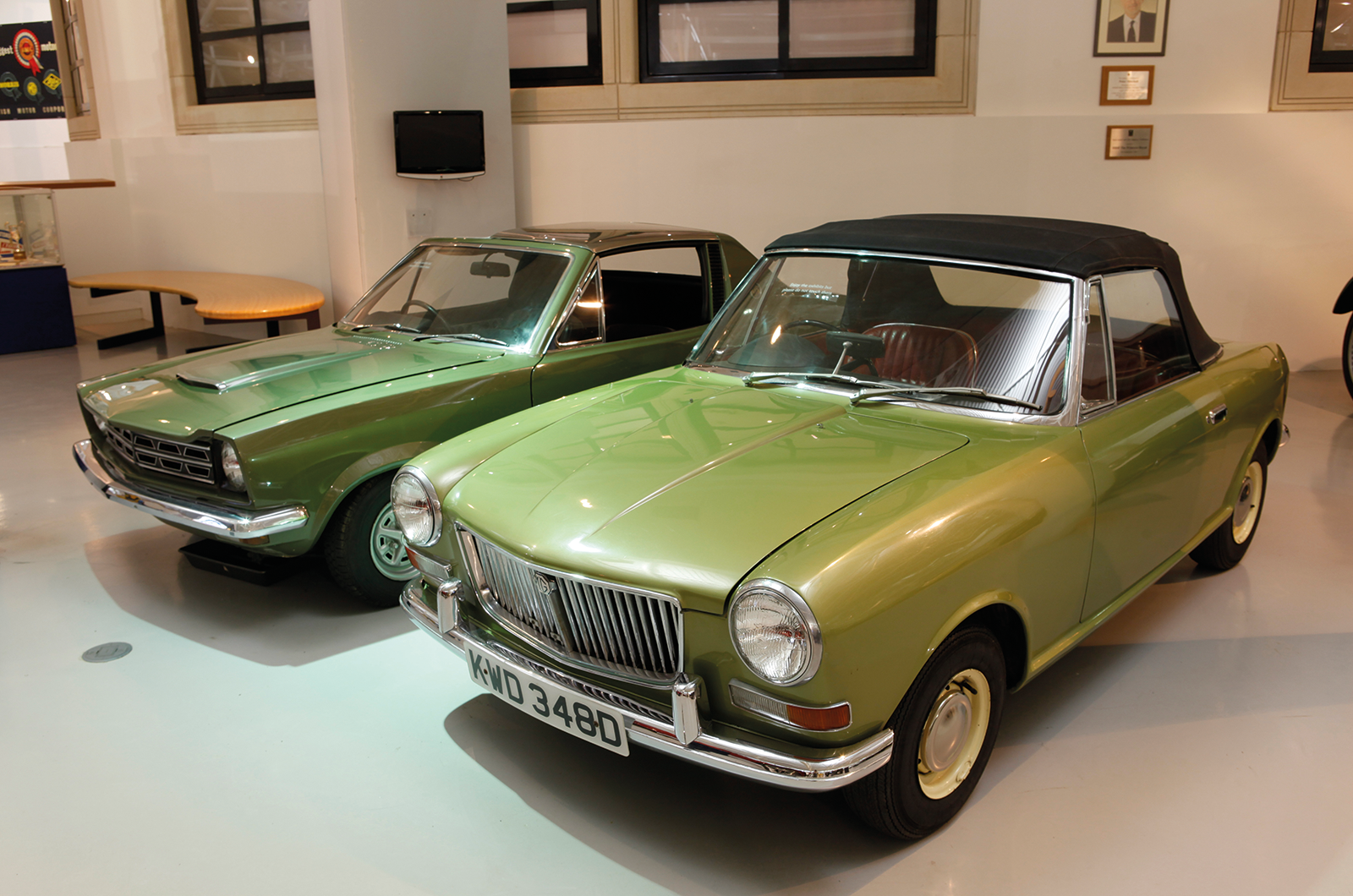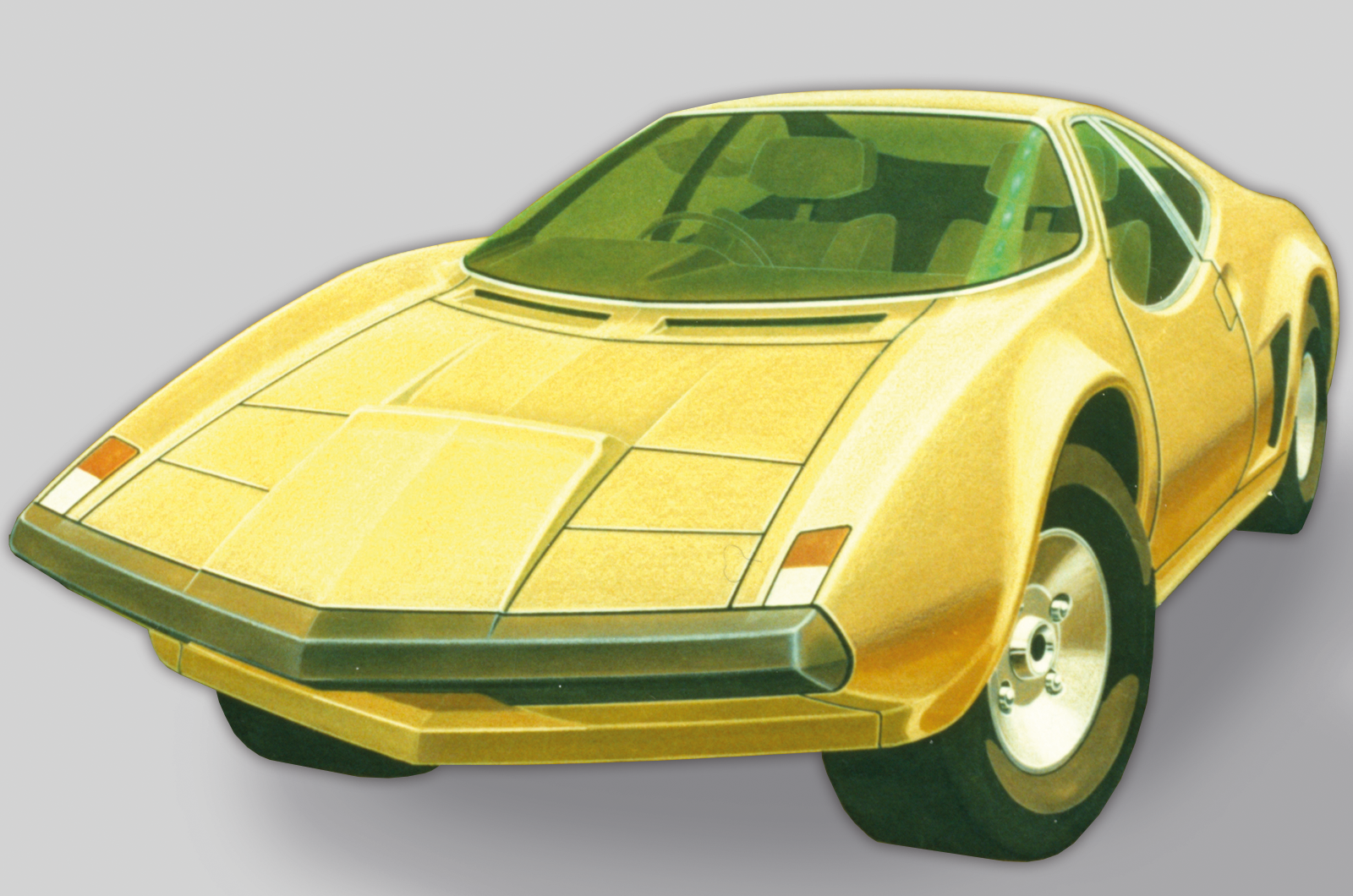The people at Abingdon are believed to have altered this aspect of the design several times during the car’s brief career, and it would be interesting to discover exactly how the alternatives looked.
The MG EX234 has a big cockpit compared to the MGB and Midget
The MG was planned as both an open-topped roadster and a fixed-head coupé, and it retains its steel roof.
Beautifully finished with a luxuriously trimmed, fluted headlining, once lifted into place this hefty piece of engineering transforms the look of the car, visually shortening it and lending EX234 something of the flavour of a miniaturised Latin thoroughbred.
From certain angles there is a hint of Ferrari 365GT to it and, if you were to fit a set of Borrani wires in place of the 12in steels, it wouldn’t look incongruous sporting a prancing horse or Maserati trident.
Don’t be fooled by the roof, though – it’s not a hardtop in the conventional sense, and alas the car can’t be driven with it in place.
Rather, it was intended by Pininfarina merely to illustrate how a non-detachable fixed-head could look, so it comes devoid of any method of being attached to the car and even has window apertures of a different shape to the door glass.
‘The bean-counters could see little justification in preparing the new car for production’
Details such as this, plus the dash-top eyeball vents that aren’t actually plumbed into the ventilation system, bestow EX234 with the sort of experimental aura that you only ever find in a prototype.
It’s a fascinating machine, and one with which I would dearly have loved to spend more time.
Images: James Mann/Paul Hughes
Thanks to Malcolm and Julie Beer; Ray Daniels; Bob Wick; Rod Stone; Geoff Clark; Chris Kynoch at the MG Car Club; Bonhams
This was first in our July 2016 magazine; all information was correct at the date of original publication
MGB and MG Midget vs EX234
Is the MG EX234 the sports car that could’ve saved MG?
So, how does EX234 stack up against the cars it was intended to replace? The answer is very well.
Slip from one to the next and the first thing you notice is the generous amount of space on offer.
After the Midget and the MGB, it does feel roomy, but whereas in those two you nestle deep inside the cockpit, in EX234 you sit higher in a vast open-plan cabin.
The heavily stylised fascia – conceived to be easily adapted from right- to left-hand drive – and cabin furniture, meanwhile, leave you with the sensation of being in something a decade younger than the B or the Midget.
Fire up the 1275cc A-series – other engine options would reputedly have been offered, although none was ever installed – and there’s no mistaking the car’s origins: the throaty throb and transmission whine are Midget through and through.
Yet where such a soundtrack suits the production car, it feels strangely out of place in such sophisticated surroundings, but any incongruity is easily ignored because EX234 is lovely to punt along.
The MG EX234 feels a whole generation more modern to drive than the company’s contemporary roadsters
In deference to the aged tyres, I keep the speeds well inside the envelope marked ‘prudent’, but it accelerates with remarkable ease, offering performance that feels more lively than either of its stablemates.
Less lively is the ride. The independent double-wishbone suspension bestows it with a smooth gait that the B simply can’t match, let alone the jittery Midget.
It’s no boulevardier, though: it corners flat and the 12in tyres hang on tenaciously.
Prototype or not, EX234 is a proper sports car that goes, stops and turns with aplomb.
After the spritely but unsophisticated Midget and the torquey but noticeably heavier MGB, it feels light, accurate and delicate.
In fact, it makes its brethren feel as if they belong to the previous decade.
MG’s missed chances
The ADO34 prototype was a roadster built using Mini underpinnings
The painful decline of MG is a sad tale made all the worse when you consider that EX234 was not the only aborted project before BL pulled the plug.
Immediately prior to that car came ADO34 (above), a Mini-based front-drive roadster that looked like an MGB in miniature, while after it came the radically styled ADO21 (below).
“We put a lot of work into that,” recalls Geoff Clark. “Chief chassis designer Terry Mitchell was really into de Dion suspension and so we came up with a mid-engined car with a de Dion rear and Watt linkage.
“On paper it looked good, but it used the Maxi engine and that simply wasn’t powerful enough. We took it to MIRA for testing but it just didn’t work.
“We also tried putting a Daimler V8 into the B, but that was a big, clumsy thing compared to the later Rover V8 conversion.”
The mid-engined ADO21 was one of the doomed MG prototypes
“In 1975, I went down to Italy to test the 2-litre O-series in the B,” he continues.
“That was fantastic, but the Longbridge people who were there took one look at it and asked why we’d bothered, telling us there wasn’t the production capacity for MG to use that engine.
“It was a real missed opportunity because it was a great car.”
The ill-fated Aston Martin-sponsored B was developed as part of a rescue bid to save MG.
The facelifted car featured the taller windscreen from the GT as well as other aesthetic mods.
It went nowhere, and thus ended car manufacturing in Abingdon.
Enjoy more of the world’s best classic car content every month when you subscribe to C&SC – get our latest deals here
READ MORE
100 years of MG
Shared heart: MG Midget 1500 vs Triumph Spitfire 1500
Austin-Healey Sprite and MG Midget: affordable fun
Malcolm Thorne
Malcolm Thorne is a contributor to – and former Deputy Editor of – Classic & Sports Car
